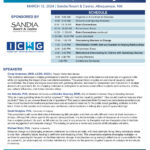
Approved for 1.5 CE Hours
Instructors:
– Debi A. LaPlante, PhD and Heather Gray, PhD
Division on Addiction, Cambridge Health Alliance, a teaching hospital of Harvard Medical School
– Mike Sciandra, Education and Outreach Coordinator
Choices Treatment Center, Lincoln, Nebraska
Early detection and intervention could make a big difference in helping people with gambling disorder, which often goes undiagnosed and untreated. However, there is low awareness about how or why to expand screening for Gambling Disorder. One U.S. national study from Harvard Medical School reported that although none of those who were identified as meeting lifetime diagnostic criteria for Gambling Disorder reported seeking treatment for those problems, about half were involved in behavioral treatment for other psychiatric problems. This tells us that expanding screening for Gambling Disorder could improve identification of gambling problems and increase the rate of treatment-seeking among people with this disorder.
That is why the Division on Addiction created Gambling Disorder Screening Day in 2013, launching the first mass screening campaign for the disorder. In commemoration of this event, held every March, this webinar will feature Dr. Debi LaPlante, Dr. Heather Gray and Mike Sciandra talking about the following:
– The history of Gambling Disorder Screening Day and their recent expansion activities.
– Discussion of their recent study regarding digital Screening Day efforts.
The webinar will also feature one of the Screening Day hosts who will reflect on how this national event works at the local level. Perhaps your organization would like to sponsor Screening Day next year!
Learning objectives:
As a result of this webinar, attendees will be able to:
– Explain the importance of screening for mental health disorders and Gambling Disorder, in particular.
– Develop and host a Gambling Disorder Screening Day event, in person or online.
– Apply the lessons learned by past hosts of Screening Day in their own
organization or community.




